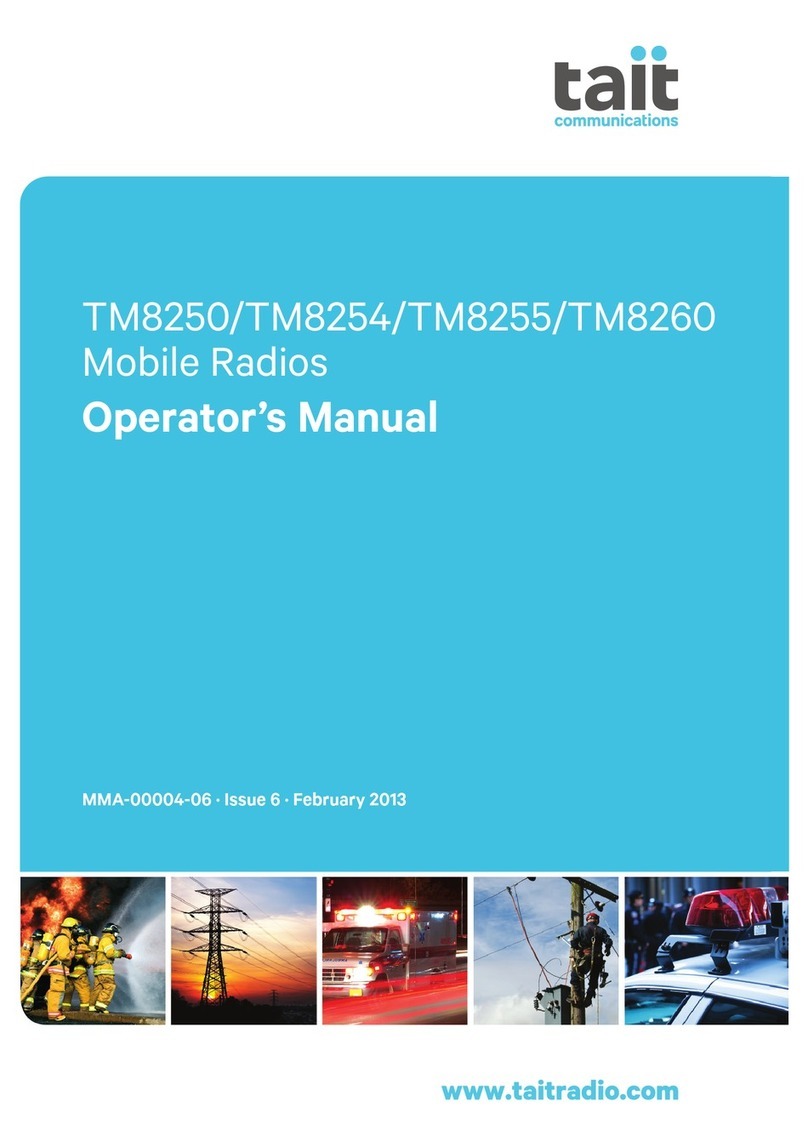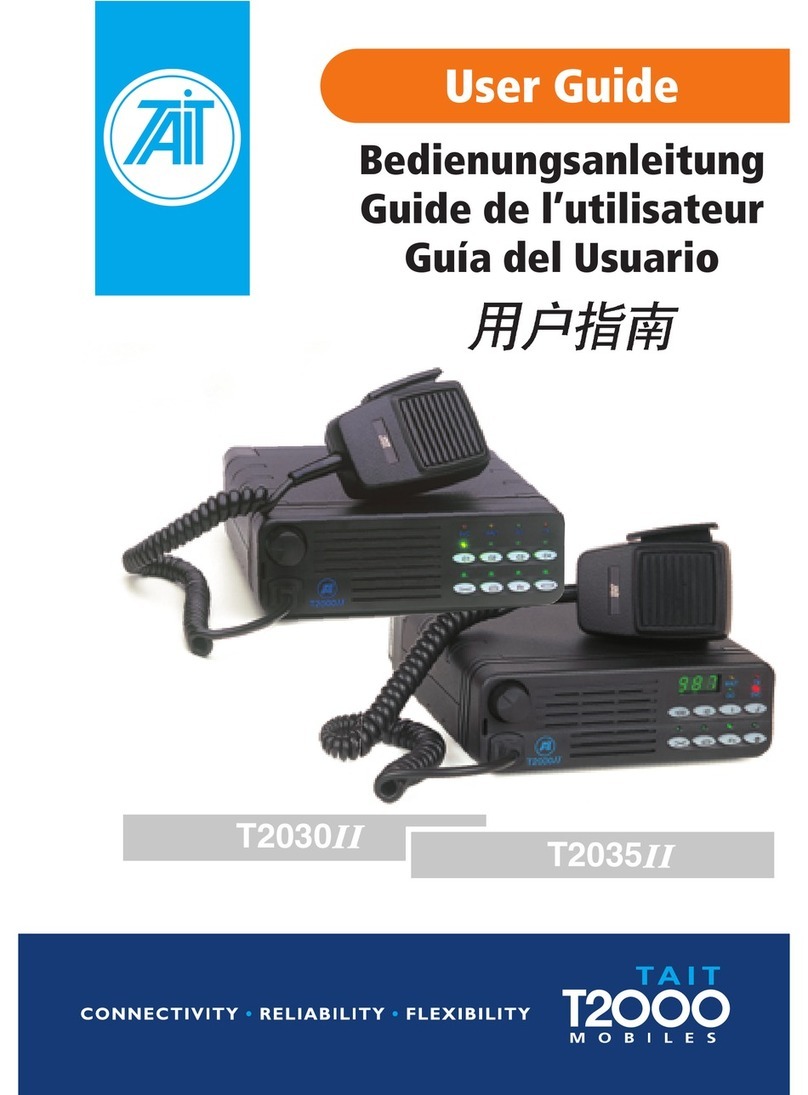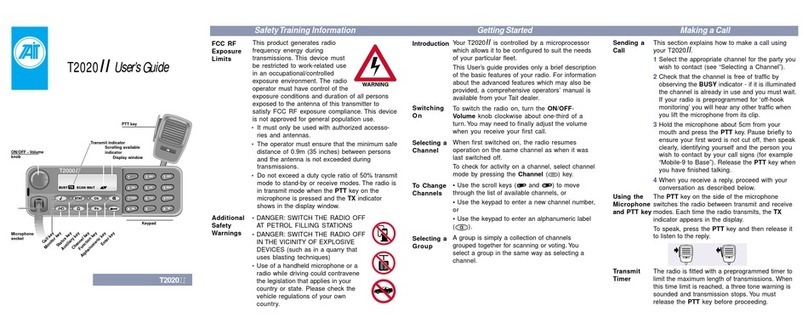
5
User Guide ................................................................................. 7
Safety Warnings .................................................................. 8
Getting Started .................................................................... 11
Making a Call ....................................................................... 12
Receiving a Call ................................................................... 13
Call Queuing ........................................................................ 14
Status Calls .......................................................................... 15
Alphanumeric Entry Mode .................................................. 16
Removing the Radio from the Vehicle ................................ 17
Installation ............................................................................ 18
Bedienungsanleitung .............................................................. 29
Sicherheitsvorkehrungen .................................................... 30
Inbetriebnahme ................................................................... 33
Rufaussendung ................................................................... 34
Rufempfang ......................................................................... 35
Anrufspeicherung ................................................................ 36
Statusrufe ............................................................................. 37
Alphanumerischer Eingabemodus ..................................... 38
Geräteentnahme aus dem Fahrzeug ................................. 39
Montageanleitung ................................................................ 40
Guide de l’utilisateur ................................................................ 51
Précautions de sécurité ...................................................... 52
Mise en route ....................................................................... 55
Lancement d’un appel ........................................................ 56
Réception d’un appel .......................................................... 57
Mémorisation des appels .................................................... 58
Appels d’état ........................................................................ 59
Mode d’entrée alphanumérique ......................................... 60
Retirer la radio du véhicule ................................................. 61
Installation de votre radio .................................................... 62
































